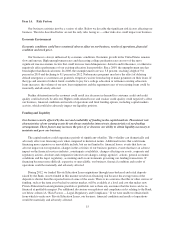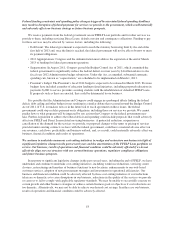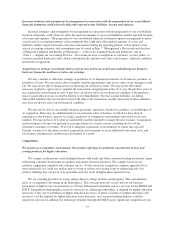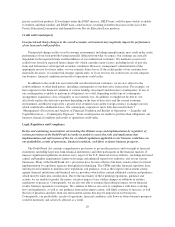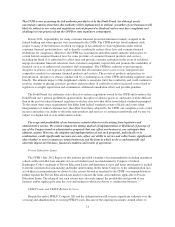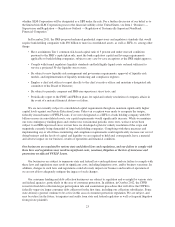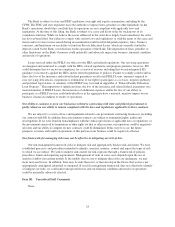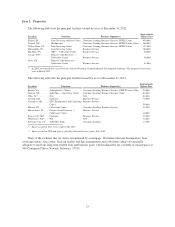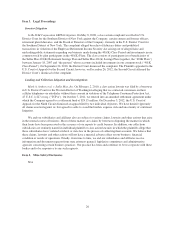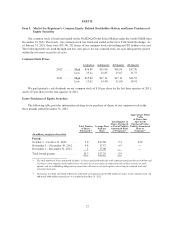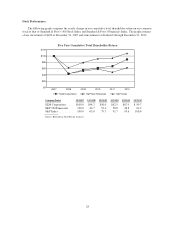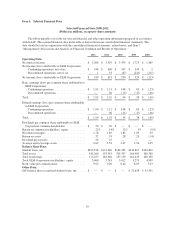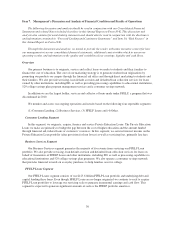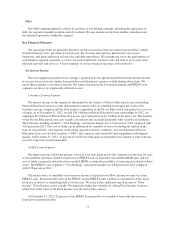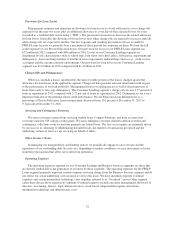Sallie Mae 2012 Annual Report Download - page 24
Download and view the complete annual report
Please find page 24 of the 2012 Sallie Mae annual report below. You can navigate through the pages in the report by either clicking on the pages listed below, or by using the keyword search tool below to find specific information within the annual report.reduce the federal budget deficit, the timing, method and manner of implementation of various education lending
initiatives has become less predictable. For example, in early 2012 the Administration by executive authority
implemented a Special Direct Consolidation Loan Initiative, which had initially been included in the
Administration’s 2011 budget not passed by Congress. This initiative provided a temporary incentive to certain
borrowers to consolidate their FFELP Loans into the DSLP program by providing interest rate reductions on
FFELP loans eligible for consolidation. This program ended on June 30, 2012. Approximately $5 billion of our
loans were consolidated to ED in 2012 under this initiative. The President’s fiscal 2014 budget is expected to be
released in March. Previous budgets included a number of education lending-related initiatives, including a
proposed reduction in payments by ED to service providers assisting students with the rehabilitation of defaulted
FFELP Loans. If proposals such as these are included in the 2014 budget and passed by Congress, they have the
potential to reallocate federal funding and appropriations in ways that could be detrimental to our businesses.
For additional information on the potential implications of Congressional and Administration actions with
respect to federal budget funding generally, see Item 1A “Risk Factors — Operations — Federal funding
constraints and spending policy changes triggered by associated federal spending deadlines may result in
disruption of federal payments for services we provide to the government, which could materially and adversely
affect our business strategy or future business prospects.”
Consumer Banking
Banks chartered as industrial banks under various state laws have long been statutorily exempt from the
requirements of the Bank Holding Company Act of 1956, as amended (the “BHCA”). Our Bank is an industrial
bank chartered under the laws of the state of Utah, regulated by the UDFI and the FDIC, and whose deposits are
insured by the FDIC. Various federal banking authorities, including the FRB and the FDIC, as well as members
of Congress, have frequently objected to the continuation of the statutory exemption of industrial banks from the
BHCA and the FDIC has, from time to time, voluntarily placed moratoriums on accepting new applications for
federal deposit insurance by industrial banks. The Dodd-Frank Act statutorily placed a moratorium on the
approval of new applications for federal deposit insurance and on certain changes in control of existing industrial
banks. This moratorium will expire in July 2013. We have no way of knowing whether this statutory moratorium
will be further extended legislatively by Congress or administratively by the FDIC or whether its expiration will
lead to reconsideration and revisions to the manner in which industrial banks are regulated. If the industrial bank
exemption to the BHCA were to be repealed, the costs of SLM Corporation becoming and remaining compliant
with the provisions of the BHCA, including the new minimum capital requirements imposed on us at the
consolidated level, would be material. If the BHCA were determined to be applicable to SLM Corporation it
would become subject to the same prudential and regulatory standards described below applicable to bank
holding companies with $50 billion or more in consolidated assets. Being subjected to these requirements would
have a material impact on our business, results of operations and financial condition.
The FSOC could designate SLM Corporation as a systemically important non-bank financial company to be
supervised by the FRB. Designation of SLM Corporation as a so-called “SIFI” would impose significant
additional statutorily–defined monitoring and compliance regimes on our business and could significantly
increase the levels of risk-based capital and highly liquid assets we are required to hold. Required
implementation of some or all of the measures currently proposed by the FRB to be applicable to SIFIs would
have a material impact on our business, results of operations and financial condition.
As directed by the Dodd-Frank Act, on April 3, 2012, FSOC approved the final rule and interpretive
guidance regarding the designation of non-bank financial companies as SIFIs. If designated as a SIFI, a non-bank
financial company will be supervised by the FRB and be subject to enhanced prudential supervision and
regulatory standards. The new rule sets forth a three-stage determination process for designating non-bank SIFIs.
In Stage 1, FSOC would apply a set of uniform quantitative criteria to determine the non-bank financial
companies that will be subject to further evaluation. Based on its financial condition as of December 31, 2012,
SLM Corporation would meet the criteria in Stage 1 and would be subject to further evaluation by FSOC in the
SIFI determination process. Because Stages 2 and 3 involve qualitative judgment by FSOC, we cannot predict
22





